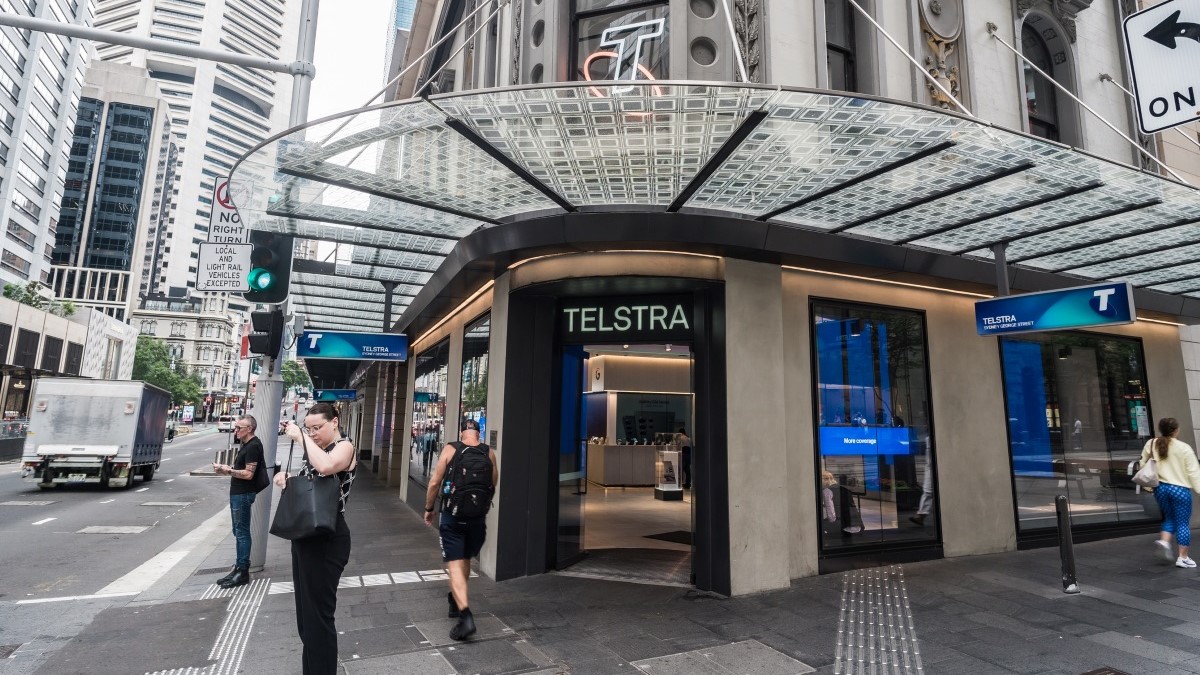Telstra plans to axe 550 jobs but says lay offs not due to AI

Telstra CEO Vicki Brady says AI is an ‘amazing tool’ but has nothing to do with the telco’s plans to sack 550 workers. Pic: Getty Images
Telstra has rejected accusations from the Communications Workers Union that the rise of artificial intelligence has sparked plans to axe 550 jobs from the telco and Australians should prepare themselves to “talk to more machines than actual people”.
Telstra has been one of the biggest adopters of AI, launching the technology across more than half of its operations. It is used on tasks from detecting and help repair faults to solving customer problems in a more timely manner.
Chief executive Vicki Brady also says she uses AI regularly, including to help her anticipate questions from investors and the media as well as draft speeches and brainstorm ideas in leadership meetings, describing it as an “amazing tool”.
But CWU nation president Shane Murphy said Telstra was “turning its back on its greatest asset” and “using AI as its smokescreen”, amid plans to cut 550 jobs.
“Telstra is using AI as an excuse behind these job cuts – but we haven’t been given any examples of how AI will replace workers and provide better or the same level of customer service,” Mr Murphy said.
“The strength of Telstra has always been its people, and replacing real people with AI will render the company as just another logo on a bit of technology.
“Telstra customers should prepare for the possibility that they will be talking to more machines than actual people, and the customer service they’ve come to know will no longer be available.”
Mr Murphy urged Telstra to reconsider the job cuts, saying “we highly advise they think long and hard about the impact to service delivery, not just their bottom line”.
“This is the worst way to introduce new technology into a dynamic industry. Telstra should be collaborating with its workforce to work with AI and harness its full potential, not just replace one with the other for the sake of profit.”
A Telstra spokeswoman said the redundancies were not about AI but a “reset” of its poorly performing enterprise division.
The spokeswoman said the telco began consulting with its employees and the union this week.
“The changes proposed to our team are not a result of our adoption of AI,” she said.
“These changes are largely driven by the ongoing reset of our Telstra Enterprise business, as well as improvements to the structure and processes of other teams across our organisation, to reduce complexity, create efficiencies, and respond to changing customer needs.
“We are committed to consulting with our people first and supporting our people with care and transparency. If the changes go ahead we’ll work with the people in the roles that are no longer required to seek to help them find another role at Telstra. If that’s not possible and they end up leaving Telstra, they’ll have access to our redundancy package and a range of support services.”
Ms Brady said last year that Telstra was struggling to keep up with Silicon Valley – which has been pursuing its lucrative enterprise clients – prompting it to axe 2800 staff, or 9 per cent of its workforce last May.
“(We are) beginning the reset of our Telstra Enterprise business by simplifying our operations and improving our productivity,” Ms Brady said at the time.
“Our industry and the world we are operating in is fast changing and we have new and different competitors.”
Income from its business and enterprise division eased 1 per cent to $1.4bn in the six months to December 31. This compared with its consumer business leaping 3.1 per cent to $5.5bn.
Telstra has contracted Indian software titan Infosys to automate more of its software engineering capabilities and accelerate its shift from legacy platforms, via artificial intelligence.
The multi-year deal will result in Telstra slashing the number of its main vendors from more than 40 to two, as it looks to automate more tasks across its business and meet its ambitious T25 cost saving goals.
It has also established an AI hub in Silicon Valley as part of a $700m joint venture with consulting group Accenture to better tackle customer complaints and accelerate its lumbering digital transformation.
In May this year Telstra poached Microsoft’s Australia and New Zealand boss Steven Worrall to helm its $15bn infrastructure business as it deepens its AI push.
Telstra became Microsoft’s biggest user of its Copilot AI assistant, buying 21,000 licences.
Ms Brady said during Telstra’s half year results in February that AI was an “amazing tool”.
She said it helped her prepare speeches and “brainstorm” during leadership meetings, saying it helped summarise and digest information quickly. Crucially, Ms Brady said the AI revolution would deliver gains in the longer-term for Telstra.
“It is really clear to me that connectivity is going to be absolutely critical. I’m not sure it’s always seen that way by people that are outside the telecommunications sector
“As we think about as a country how do we make sure we deliver on the productivity ambition, so we can be as competitive as possible as a country and grow living standards, it’s not always obvious to people that all of this amazing technology needs to be connected.”
This article first appeared in The Australian.
UNLOCK INSIGHTS
Discover the untold stories of emerging ASX stocks.
Daily news and expert analysis, it's free to subscribe.
By proceeding, you confirm you understand that we handle personal information in accordance with our Privacy Policy.








